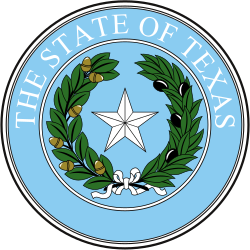General election
The general election saw the Ku Klux Klan back Republican George C. Butte, seeing him as a more acceptable alternative to the anti-Klan Ferguson, despite the state Republican platform's stated "unalterable opposition to the Ku Klux Klan." [11] [12] Additionally, Ferguson saw an unprecedented number of defections from the Democratic Party, notably state legislator and longtime party leader Thomas B. Love. [13] A coalition of anti-Ferguson Democrats and prohibitionists formed the Good Government Democratic League [12]
An atypically close race in then-staunchly Democratic Texas, Butte received 41.11% of the vote to Fergueson's 58.89% of the vote. [14] By contrast, Democratic presidential nominee John W. Davis received 73.70% of the statewide vote in his three-way race against Calvin Coolidge (19.78%) and Robert M. La Follette (6.52%) in the same year. [15] Ferguson was sworn in as the 29th Governor of Texas on January 20, 1925. [14]
This page is based on this
Wikipedia article Text is available under the
CC BY-SA 4.0 license; additional terms may apply.
Images, videos and audio are available under their respective licenses.



